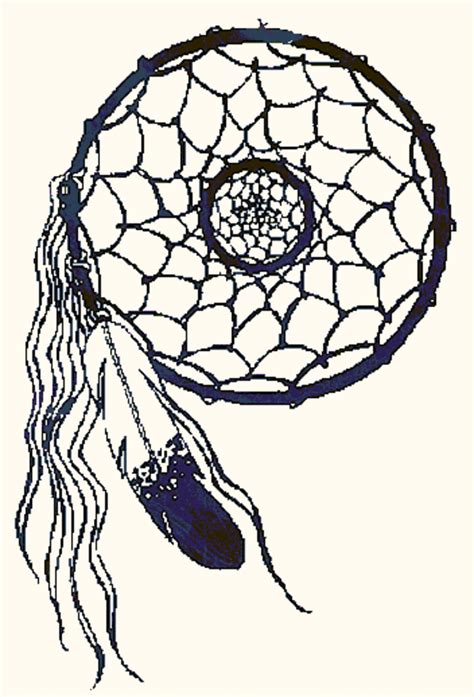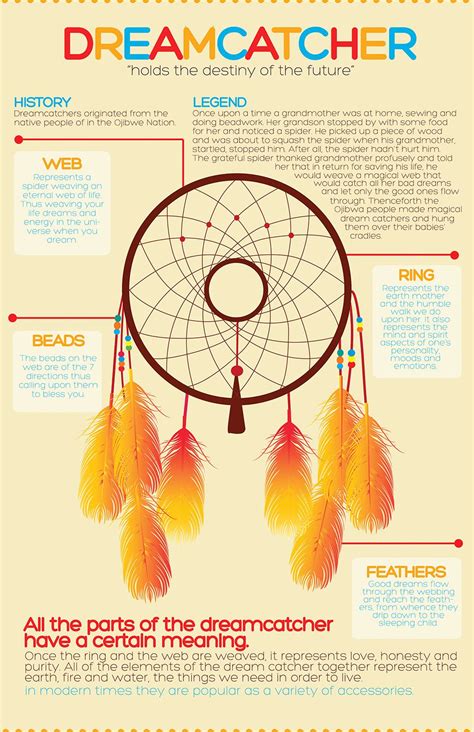The dream catcher, a handmade object typically consisting of a hoop, a net or web, and decorative items like feathers and beads, has been a part of Native American culture for centuries. Its origins and meanings are deeply rooted in the spiritual and mystical beliefs of the indigenous peoples of North America. Here, we will delve into five fascinating facts about dream catchers, exploring their history, symbolism, and the role they play in the lives of those who create and use them.
Origins and History of Dream Catchers

Dream catchers are believed to have originated from the Ojibwe Nation, also known as the Chippewa, who are one of the largest and most prominent Native American tribes in North America. The Ojibwe people have a rich spiritual tradition and believe in the power of dreams and the importance of protecting their children from bad dreams and evil spirits. According to legend, the dream catcher was created by Asibikaashi, also known as Spider Woman, who took care of the children of the tribe and protected them from harm. The dream catcher’s web was said to catch the bad dreams and spirits, allowing only the good dreams to pass through.
The Symbolism of Dream Catchers
Dream catchers are rich in symbolism, with each part of the dream catcher representing a different aspect of life and spirituality. The hoop, typically made from willow or another flexible wood, represents the circle of life. The web, made from thread or yarn, symbolizes the connection between the physical and spiritual worlds. The feathers, often hung from the bottom of the dream catcher, are believed to carry prayers to the spirits and represent breath, which is essential for life. The beads and other decorative items used on the dream catcher can symbolize different things depending on their color and type, such as protection, wisdom, or healing.
| Dream Catcher Component | Symbolic Meaning |
|---|---|
| Hoop | Circle of Life |
| Web | Connection between physical and spiritual worlds |
| Feathers | Carry prayers to the spirits, represent breath |
| Beads and Decorations | Protection, wisdom, healing, etc. |

Modern Use and Cultural Significance

Today, dream catchers are not only used in Native American communities but have also become popular decorative items and symbols of spirituality worldwide. They are often given as gifts to newborns or hung in homes to protect the inhabitants from bad dreams and evil spirits. The dream catcher has also become a symbol of cultural pride and identity for many Native Americans, representing a connection to their ancestors and traditional way of life. However, it’s essential to approach the use and display of dream catchers with respect and understanding of their cultural significance, recognizing the historical and ongoing struggles of Native American communities.
Key Points
- The dream catcher originated from the Ojibwe Nation as a protective charm for children.
- Each component of the dream catcher has symbolic meaning, representing aspects of life and spirituality.
- Dream catchers are used to protect from bad dreams and evil spirits, allowing good dreams to pass through.
- The commercialization of dream catchers has led to a variety of designs, some of which may not align with traditional beliefs.
- The dream catcher is a significant cultural and spiritual symbol, especially for Native American communities, representing connection to heritage and the natural world.
Preserving Traditional Knowledge
Efforts to preserve traditional knowledge and cultural practices related to dream catchers are crucial. This includes educating people about the origins, meanings, and proper use of dream catchers, as well as supporting Native American artists and communities who continue to create and pass down this traditional craft. By doing so, we can help ensure that the cultural significance and spiritual importance of dream catchers are respected and preserved for future generations.
What is the primary purpose of a dream catcher?
+The primary purpose of a dream catcher is to protect sleepers, especially children, from bad dreams and evil spirits, allowing only good dreams to pass through.
Where did dream catchers originate?
+Dream catchers originated from the Ojibwe Nation, part of the indigenous peoples of North America.
What do the different parts of a dream catcher symbolize?
+The hoop represents the circle of life, the web symbolizes the connection between the physical and spiritual worlds, and the feathers and beads have various symbolic meanings depending on their type and color.
In conclusion, the dream catcher is more than just a decorative item; it’s a symbol of protection, spirituality, and cultural heritage. By understanding its origins, symbolism, and significance, we can appreciate the importance of respecting and preserving Native American traditions and cultural practices. Whether used in its traditional context or as a symbol of cultural pride, the dream catcher remains a powerful and meaningful object, reminding us of the importance of respecting and honoring the cultural and spiritual beliefs of indigenous communities.



